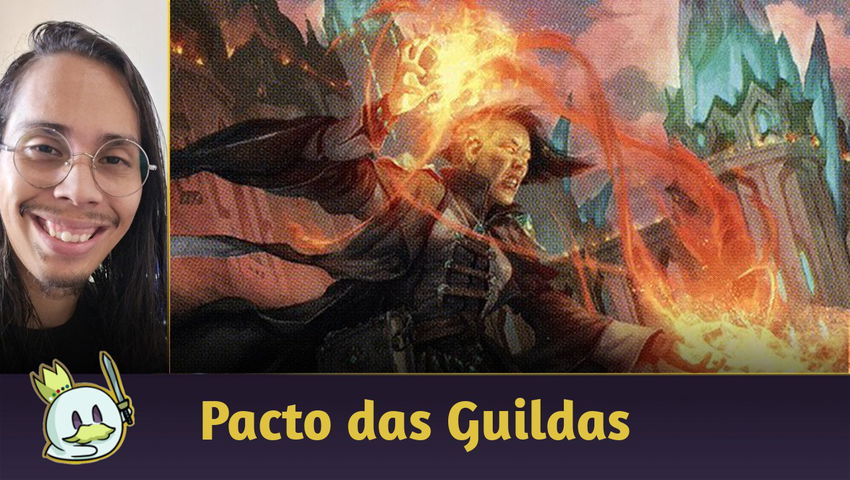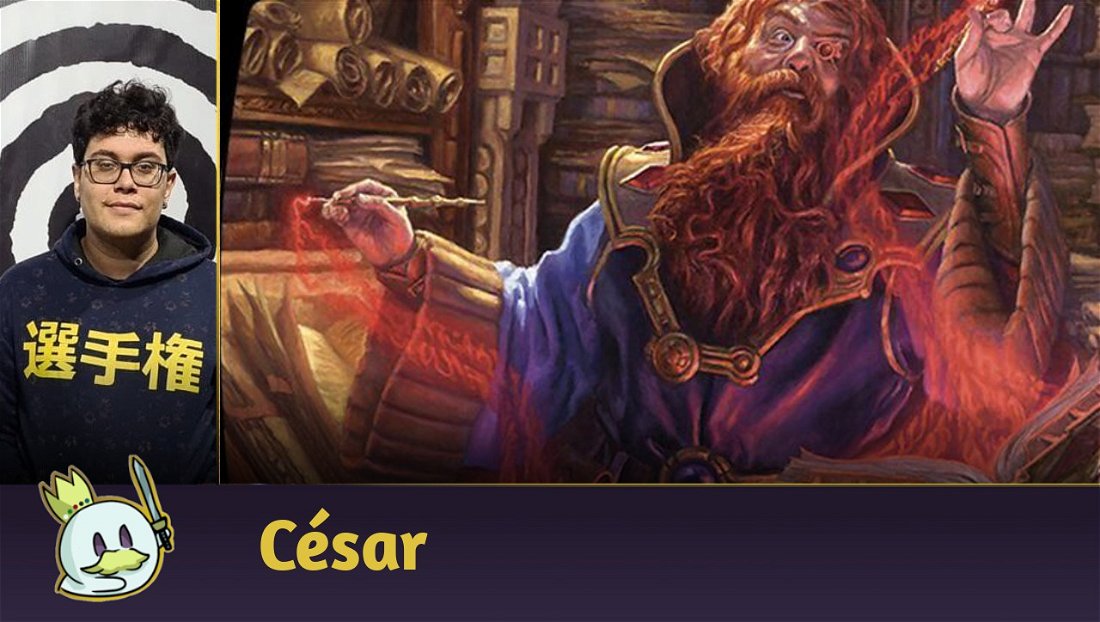About the Deck
The history of Pauper is filled with complex combos that can win games in a single turn. Thanks to cards like Dark Ritual, Lotus Petal, and Cabal Ritual, the format has struggled numerous times against strategies involving the Storm mechanic.
Fortunately, Grapeshot, Galvanic Relay, and Chatterstorm are no longer part of the format, but Pauper is still home to Reaping the Graves, a card that is the heart of Cycling Storm.

An instant spell with the Storm mechanic that allows you to copy it for each other spell cast before it and lets its controller return a creature from their graveyard to their hand.
Combine this with the mana accelerators mentioned above and various creatures with Cycling ability, which allows you to discard a card by paying its cycling cost and draw a card (looting), and you have Cycling Storm, a deck that can win the game in a single turn without relying on combat.
Cycling and Win Condition
The deck features 23 creatures, 22 of which have cycling and will dig through the deck searching for combo pieces. There are only three creatures worth casting in this deck:

Drannith Healer is situational; if you need life, you will use it to gain 1 life each time you cycle a card. Ardent Elementalist is a creature that helps with the deck's loops.
On the other hand, Drannith Stinger is the win condition - with it on the battlefield, every time you cycle a card, you deal 1 damage to the opponent. Don't be afraid to put it into the graveyard to dig deeper into your deck; after all, Reaping the Graves is in the list precisely for that purpose.
Fuel the Storm and cast a massive Reaping chain to retrieve all your creatures from the graveyard, including the Stinger. Put it into play and turn the cyclers into ammunition to finish off your opponent.
Mulligan and Gameplay Approach
You are a combo player, and mulliganing is your friend. Know which hands are playable or not, and seek the ideal combination of cards. This deck doesn't want too many lands in hand. Two lands and several cyclers are an excellent start.

You can keep a hand with only one land if you have rituals to cycle several cards or have three or more copies of Street Wraith, the best cycler in the deck, allowing you to essentially draw a card for free.
Avoid using Songs of the Damned unless you have a well-stocked graveyard or no other way out, and try not to mulligan too much in search of the perfect hand. Be patient; the cards will come eventually.
Comboing off

As mentioned before, the combo consists of generating a lot of mana, casting multiple spells to create a Reaping for 10 or more, reusing your cyclers with Drannith Stinger on the battlefield to target the opponent. However, there are several prerequisites you need to check to execute the combo and finish the game.
First, you need to fill your graveyard with many creatures. By doing this, you will not only draw cards and dig for other combo pieces but also improve Cabal Ritual and, most importantly, Songs of the Damned, which is the main accelerator of the deck.
Use the rituals wisely. I like to apply a sense of urgency to the rituals in this deck. Dark Ritual can be used to cycle multiple times in the same turn, to enable a dispute, or in any other situation that requires it.
Cabal Ritual should only be used with Threshold active; making 3 mana for 2 won't bring benefits in almost any situation.
Songs of the Damned is the last card you should use before casting Reaping the Graves, unless it's the difference between winning and losing. For example, if you have no more rituals except Songs, your opponent has lethal on their next turn, and you have cyclers to try to dig a little more and have the chance to find Reaping.
Pause, think, calculate. This deck requires perfect use of all resources to going off; one misstep, and everything crumbles.
In some situations, you may find yourself having to cast 2 or even 3 Songs of the Damned or more than one Reaping the Graves to execute the combo, and that's not a bad thing. Analyze the possibilities before taking action.
Sometimes, a single Drannith Stinger can finish the game on its own. Sometimes, you'll have to take desperate measures. You don't want to lose the game, so seek solutions until the last breath. I've won games with this deck by casting creatures with the extra mana when I had no other option.
Lotus Petal is a land. This deck often doesn't need more than one mana. There have been situations where I kept a hand with rituals, Petals, and cyclers, and I could develop the game with just that.
Recursion

Combo decks usually use recursion to create loops or repeat actions multiple times.
Mystical Teachings and Ardent Elementalist fulfill this role here. Both will act as an "extra copy of something," with Teachings being the fifth copy of spells in your deck and the Elementalist being a copy of spells in the graveyard, including Teachings itself.
These two cards fuel the Storm, and the Elementalist, in particular, feeds Songs of the Damned. Casting a Songs, playing the Elementalist, sacrificing it to a dispute, and retrieving the Songs again is insanely strong.
Gameplay
You can watch a video where I explain more about the deck and analyze a complete Pauper League in the link below:
Sideboard Guide

The deck's sideboard is well-focused on specific situations that disrupt the game plan, such as counter spell decks, fast aggro, graveyard hate, other combos, and damage prevention.
Keep in mind that the more sideboard cards you use, the lower the post-sideboard consistency, putting your plan at risk. So use the sideboard wisely.
Vs. Mono-Red Aggro or Burn
This match is defined as a race. The faster one wins, and most of the time, Mono-Red will be the victor. Post-side, we have Weather the Storm, which can be a secret win condition against the opponent, but we will have to deal with Relic of Progenitus and even artifact hate, which complicates the game significantly.
It's not impossible to win, but the speed of Mono-Red is higher than that of Cycling Storm, so luck needs to be on our side. Bring in a number of Ingot Chewer equivalent to the number of graveyard hate cards the opponent may bring (depending on their list, they might have two, three, or even four Relics in the sideboard). Street Wraith is a strong card, but in this matchup, it can hurt you.
In

Out

Vs. Affinity
Here we have a more balanced game. Affinity has a slow start but becomes faster from turn 3 onward, which gives us a window to act. If the game goes beyond that, things can get a bit complicated.
Nihil Spellbomb, Krark-Clan Shaman, and Galvanic Blast are problematic cards. I usually keep 61 cards after sideboarding.
In

Out

Vs. Bogles
Another race. The faster deck wins, but unlike against Mono-Red, the opponent will hardly have any interaction and will go all-in, relying on luck to have the pieces needed to accelerate damage. Weather the Storm is excellent after sideboarding.
In

Out

Vs. Dimir Delver
A game that I consider also balanced but leans more towards the side of Storm. Dimir Delver takes a Tempo stance and relies on cheap interactions like Spell Pierce, Counterspell, and Snuff Out. Play around the counterspells and focus on resolving the key pieces.
Having two or more Stingers is usually enough to overcome the opponent's removal. Post-side, Red Elemental Blast will do all the work of protecting the combo.
In

Out

Vs. Goblins Combo
A near-mirror match between two combos. Goblins are faster than Cycling, consistently comboing off on turn 3. The latest versions use Troll of Khazad-Dum and Exhume, offering an alternative win plan, but the danger lies in the deck's combo, to which we have no answer in game 1 and need to respond at any cost in game 2. The same doesn't always apply to the opponent, who uses main deck graveyard hate and has artifact hate and discard.
In

Out

Conclusion
Cycling Storm is a complex deck, full of details, and demands a lot from its pilot, but achieving victories with the deck is very rewarding, as it's fun and challenging. If you, like me, love interesting combos and different ways to win the game, then this deck is an option to play in Pauper.
Leave your questions and suggestions in the comments, and I will try to respond to all of them. Until next time!















— Comments 0
, Reactions 1
Be the first to comment